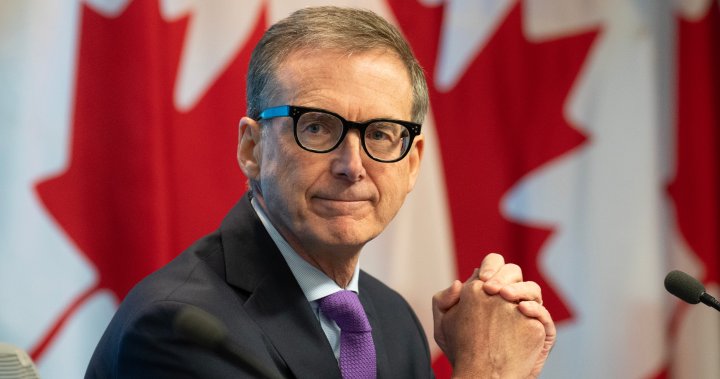
2 years in, has the Bank of Canada’s historic rate hike campaign done the job?
Global News
Two years after the Bank of Canada started raising its key interest rate, inflation, the housing market and the overall economy are vastly different. Here's what's next.
It’s been two years since the Bank of Canada started the most aggressive interest rate hike campaign in its history in a bid to tame rampant inflation, and the Canadian economy looks vastly different.
As the Bank of Canada delivered the first of what would be 10 interest rate hikes over the course of the tightening cycle on March 2, 2022, it flagged fresh concern about impacts from Russia’s unprovoked invasion of Ukraine, a conflict that was barely a week old at that point.
A central bank statement at the time noted the economy’s roaring recovery from the COVID-19 Omicron variant shutdowns and fears of what new mutations to the virus could bring.
And as inflation was accelerating – it would rise from 5.1 per cent at the start of 2022 to a 41-year peak of 8.1 per cent in half a year – prices in Canada’s housing markets had hit an all-time high ahead of pronounced correction.
The substantial cooling of the economy has come thanks in part to the 4.75 percentage points of hikes to the Bank of Canada’s policy rate, which stands at 5.0 per cent.
Ahead of the Bank of Canada’s next rate decision on March 6 and on the second anniversary of the first rate hike of the cycle, Global News spoke to economists about what’s changed since the tightening began and where the central bank’s quest to tame inflation goes next.
While efforts to restore price stability without crashing the economy have largely been successful, experts – and the Bank of Canada’s top policymakers themselves – concede that the tightening cycle has not been perfect.
Two years since the Bank of Canada’s initial 25-basis-point interest rate hike, inflation has cooled significantly. The annual rate of inflation last clocked in at 2.9 per cent in January, and the central bank’s latest forecasts have price pressures cooling back to the two per cent target sometime in 2025.
